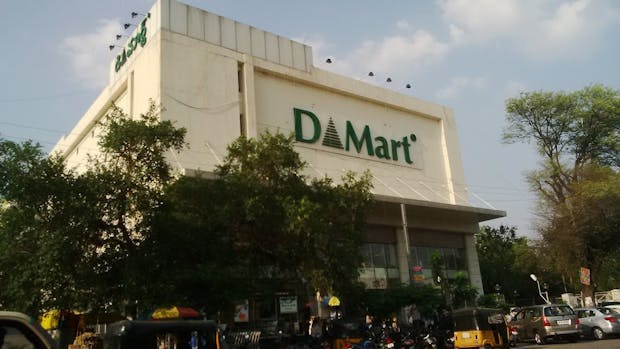DMart’s cart has some squeaky wheels

DMart’s cart has some squeaky wheels
on the main streets of stock markets, as with life in general, expectations appear to be the key to how any news is perceived. that is why a loss-making company’s stock might double in price after a successful mega IPO while that of one reporting a healthy profit might be punished for falling even marginally short of estimates. the latter situation seems to be playing out for DMart whose stock slid 12% in three days from January 10 to 12, placing it at its lowest price since last September.
given that, like many FMCG giants such as HUL and Brittania, DMart has thus far been a stock that only trends upwards in the big picture, is this correction any cause for concern?
the numbers
from a standalone perspective, DMart’s numbers rather easily pass muster. its consolidated revenue for Q3 FY22 stood at a two-year high at Rs 9,065 crore, while its profit for the quarter showed a 24.6% growth over corresponding previous year period at Rs 586 crore. meanwhile, despite surging inflation, it managed to keep the increase in total expenses over the same comparison down to 21.72%, at Rs 8,493.55 crore for Q3 FY22.
this is particularly significant as DMart operates around the core principle of being cost-efficient. its CEO Neville Noronha even stated, “we are seeing higher inflation as an opportunity to make our buying more efficient, our assortment sharper and continue to keep our costs low." however, these numbers still fell short of analyst expectations.
hares and tortoises
more than the overall figures themselves, analysts were concerned over sectoral trends emerging within. a breakdown showed that the sale of fashion and general merchandise categories were down, even as the online sales of fashion items doubled and overall ecommerce sales clocked in at $9.2 billion (~Rs 68,000 crore) over the festive period.
at the same time, DMart is facing increasing competition for staples, groceries, and other such items from delivery-based players such as Swiggy, Dunzo, and Zomato. its own take on the model, DMart Ready, wherein customers are expected to pick up their orders, registered a 44% yearly growth in the quarter to Rs 153 crore but accounted for less than 2% of overall revenues. in the offline category too, India’s second-largest retailer has to contend with an increasingly hungry Amazon and market leader Reliance Retail. thus concerns are that the trend of losing business to online players in the aforementioned segments might soon grow to affect DMart’s overall business.
we all know the story of how the tortoise wins the race against the hare, but the ecommerce players pushing for 10-minute grocery deliveries are anything but complacent. DMart’s size perhaps affords it some breathing space in terms of the near future, but if it fails to read the market there’s a chance, no matter how remote, of it going down the path of Kodak or Blockbuster.



